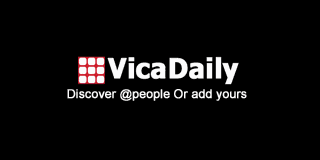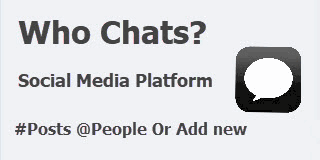-
Feed de Notícias
- EXPLORAR
-
Blogs
What is the PBS? A Complete Guide to the Pharmaceutical Benefits Scheme in Australia

What is the PBS? A Complete Guide to the Pharmaceutical Benefits Scheme in Australia
The Pharmaceutical Benefits Scheme (PBS) is a cornerstone of Australia’s healthcare system, ensuring that essential medicines are accessible and affordable for all citizens and eligible residents. Introduced in 1948, the PBS plays a critical role in reducing the financial burden of medications, allowing Australians to receive treatments that might otherwise be cost-prohibitive.
In this comprehensive guide, we’ll delve into the workings of the PBS, its benefits, eligibility criteria, and the significance of programs like the Doctor’s Bag PBS, designed to enhance medical care across the nation.
Understanding the PBS
The PBS is a government-funded program that subsidizes a wide range of prescription medications. Managed by the Department of Health and Aged Care, it is an integral part of Australia’s universal healthcare system, complementing Medicare. The PBS ensures that Australians pay only a fraction of the cost of essential medicines, while the government covers the remainder.
How the PBS Works
- Approved Medicines: The PBS covers thousands of medications listed on the PBS Schedule. These include treatments for chronic illnesses, acute conditions, and preventive care.
- Subsidized Pricing: Patients contribute a co-payment for their prescriptions, which is capped. In 2025, the general co-payment is capped at AUD 30, while concession cardholders pay AUD 7.60 per prescription.
- Safety Net Threshold: The PBS Safety Net protects individuals and families who require a significant number of prescriptions. Once the Safety Net threshold is reached, medications are either free or available at a reduced cost.
Eligibility for the PBS
The PBS is available to:
- Australian citizens and permanent residents.
- Eligible overseas visitors from countries with reciprocal healthcare agreements.
Patients must have a valid prescription from a registered medical practitioner, and the medication must be dispensed by a PBS-approved pharmacy.
The Importance of the PBS
The PBS is not just about cost savings; it’s about equitable access to healthcare. It ensures that:
- Chronic disease management becomes affordable, enabling patients to adhere to long-term treatment plans.
- Preventive care is prioritized, reducing the risk of severe illnesses.
- Healthcare disparities are minimized, especially for low-income families and rural communities.
The Doctor’s Bag PBS: Supporting Emergency Care
The Doctor’s Bag PBS is a specialized component of the PBS that equips doctors with essential medications for emergency and after-hours care. This initiative is particularly vital for rural and remote areas, where access to pharmacies and medical facilities may be limited.
What is the Doctor’s Bag PBS?
The Doctor’s Bag is a program that provides doctors with a set of commonly used medications free of charge. These medications are intended for emergency situations where immediate treatment is required before the patient can access a pharmacy.
Medications in the Doctor’s Bag PBS
The list of medications included in the Doctor’s Bag is periodically reviewed and updated to meet the evolving needs of patients. These medicines typically cover:
- Pain relief (e.g., morphine, paracetamol).
- Antibiotics for infections.
- Anti-inflammatory drugs.
- Emergency treatments like adrenaline for anaphylaxis.
Why the Doctor’s Bag PBS Matters
- Immediate Access: Enables doctors to provide critical care without delay.
- Supports Remote Areas: Addresses the healthcare gap in underserved regions.
- Emergency Preparedness: Ensures that doctors are equipped to handle life-threatening situations.
Key Features of the PBS
Broad Coverage
The PBS covers a wide range of medications, from over-the-counter drugs to specialized treatments for rare conditions. Each medicine undergoes a rigorous evaluation process to determine its clinical efficacy and cost-effectiveness before inclusion.
Flexibility for Prescribers
Doctors can prescribe medications based on the clinical needs of their patients, guided by the PBS formulary. Programs like the Doctor’s Bag PBS further enhance a physician’s ability to respond to emergencies.
Safety and Quality Assurance
The Australian government ensures that all PBS-listed medications meet stringent safety and quality standards. This instills confidence in both healthcare providers and patients.
Benefits of the PBS for Australians
1. Financial Relief
The PBS significantly reduces the cost of medications, making healthcare more affordable for individuals and families.
2. Encourages Preventive Care
By subsidizing preventive medications, such as vaccines and blood pressure drugs, the PBS promotes early intervention and reduces long-term healthcare costs.
3. Enhances Health Outcomes
With access to affordable medications, patients are more likely to adhere to prescribed treatment plans, leading to better health outcomes.
4. Empowers Healthcare Providers
Programs like the Doctor’s Bag PBS empower doctors to deliver immediate care, enhancing their ability to save lives during emergencies.
Challenges and Criticisms of the PBS
While the PBS is a robust system, it faces certain challenges:
- Rising Costs: As new, high-cost medications are introduced, the financial burden on the government increases.
- Access Disparities: Rural and remote areas may still face barriers, despite initiatives like the Doctor’s Bag PBS.
- Administrative Complexity: Navigating PBS processes can be challenging for healthcare providers and patients alike.
How to Make the Most of the PBS
- Consult Your Doctor: Ensure that your prescriptions are PBS-listed and discuss alternatives if they are not.
- Track Your Safety Net: Keep a record of your prescription costs to benefit from the PBS Safety Net.
- Utilize Programs Like the Doctor’s Bag PBS: If you’re a healthcare provider, familiarize yourself with the Doctor’s Bag PBS to optimize patient care.
Future of the PBS
The PBS continues to evolve, with efforts focused on:
- Expanding the range of subsidized medications.
- Integrating digital solutions for streamlined access.
- Addressing the unique needs of rural and indigenous communities through targeted programs like the Doctor’s Bag PBS.
Conclusion
The Pharmaceutical Benefits Scheme (PBS) is a vital pillar of Australia’s healthcare system, providing affordable access to essential medicines for millions of Australians. Programs like the Doctor’s Bag PBS underscore its commitment to equitable healthcare, ensuring that even the most vulnerable populations receive timely and effective treatment.
As the PBS adapts to new challenges and opportunities, it remains a testament to Australia’s dedication to the health and well-being of its citizens. Whether you’re a patient, healthcare provider, or policymaker, understanding and utilizing the PBS is key to fostering a healthier, more inclusive Australia.






